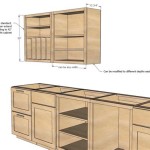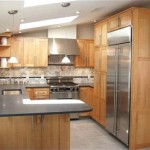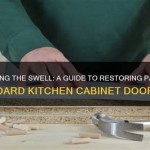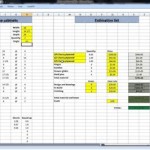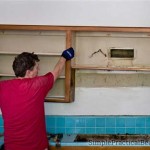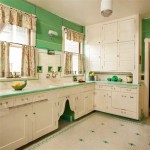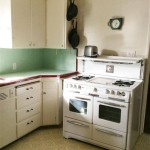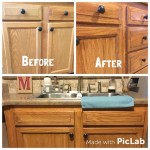Best LVT Flooring for Kitchens: A Comprehensive Guide
Luxury Vinyl Tile (LVT) has emerged as a popular flooring choice for kitchens, offering a compelling blend of durability, aesthetics, and affordability. Its inherent water resistance, coupled with advancements in design and manufacturing, make it a practical and stylish alternative to traditional kitchen flooring options such as hardwood, tile, and laminate. Selecting the "best" LVT flooring for a kitchen, however, requires careful consideration of various factors including wear layer thickness, construction, style preferences, and budget. This article provides a comprehensive guide to navigate the options and make an informed decision.
The kitchen environment presents unique challenges for flooring materials. Frequent spills, heavy foot traffic, and potential impact from dropped objects necessitate a surface that can withstand daily wear and tear while maintaining its appearance. LVT excels in these areas, providing a resilient and easy-to-maintain surface that can replicate the look of more expensive materials like wood, stone, or ceramic tile. The key to selecting the right LVT lies in understanding its construction and performance characteristics.
Understanding LVT Construction and Key Features
LVT flooring is typically comprised of several layers bonded together to create a durable and stable product. Understanding these layers is crucial for evaluating the overall quality and performance of the flooring.
The bottom layer, often referred to as the backing layer, provides stability and cushioning. This layer is usually made of vinyl and may include added features like fiberglass reinforcement for enhanced dimensional stability. The core layer sits above the backing and is responsible for the structural integrity of the tile. This core can be made of various materials, including solid vinyl, WPC (Wood Plastic Composite), or SPC (Stone Plastic Composite). SPC cores are generally denser and more rigid than WPC cores, offering superior indentation resistance.
Above the core layer is the decorative layer. This layer features a high-resolution printed image that replicates the appearance of wood, stone, or other materials. The quality of the printing and the realism of the texture significantly impact the overall aesthetic appeal of the LVT.
The topmost layer is the wear layer, a transparent protective coating that shields the decorative layer from scratches, stains, and wear. The thickness of the wear layer is a critical factor in determining the durability of the LVT. A thicker wear layer provides greater protection and is essential for high-traffic areas like kitchens. Wear layer thickness is typically measured in mils (thousandths of an inch). For kitchens, a wear layer of at least 20 mils is recommended to ensure long-lasting performance.
Finally, an enhanced urethane coating is often applied on top of the wear layer. This coating provides additional protection against scratches, stains, and scuffs. It also makes the floor easier to clean and maintain.
Factors to Consider When Choosing LVT for a Kitchen
Selecting the appropriate LVT flooring for a kitchen involves considering several factors beyond mere aesthetics. Evaluating these factors will help ensure the chosen flooring meets the specific needs and demands of the space.
Water Resistance: While all LVT is inherently water-resistant, some products offer superior water resistance compared to others. For kitchens, where spills are common, choosing a 100% waterproof LVT is highly recommended. This typically means opting for LVT with an SPC core, as SPC is completely impervious to water. WPC cores, while water-resistant, may be more susceptible to water damage if exposed to prolonged moisture.
Wear Layer Thickness: As previously mentioned, the wear layer is the primary defense against scratches and wear. For kitchens, a wear layer of at least 20 mils is advisable. In high-traffic kitchens or those with pets, a 28 mils or even a 40 mils wear layer may be a worthwhile investment. Consider the expected level of use and potential for abrasion when determining the appropriate wear layer thickness.
Core Type: The core type significantly impacts the durability, stability, and comfort of the LVT. SPC cores offer superior indentation resistance and are ideal for kitchens where heavy appliances or furniture are present. They also provide excellent dimensional stability, minimizing the risk of expansion or contraction due to temperature fluctuations. WPC cores offer more cushioning underfoot and can be slightly warmer than SPC cores. However, they may be more prone to indentation and may not be as suitable for areas with heavy objects.
Installation Method: LVT flooring is available in various installation methods, including glue-down, click-lock, and loose-lay. Glue-down LVT provides the most stable and permanent installation, making it a popular choice for high-traffic areas. Click-lock LVT offers a floating installation method that is easy to install and requires no adhesive. Loose-lay LVT is designed to be installed without adhesive or interlocking mechanisms, making it a convenient option for temporary or rental spaces. For kitchens, glue-down or click-lock LVT are generally preferred for their durability and stability.
Style and Aesthetics: LVT offers a wide range of styles and designs, replicating the look of wood, stone, tile, and other materials. Consider the overall aesthetic of the kitchen and choose an LVT style that complements the existing cabinetry, countertops, and décor. LVT is available in various plank sizes, tile shapes, and colors, allowing for creative design possibilities. Embossed textures can further enhance the realism of the flooring, adding depth and dimension.
Maintenance: LVT is relatively easy to maintain, requiring only regular sweeping and occasional mopping. Choose an LVT with a stain-resistant finish to minimize the risk of permanent stains from spills. Avoid using abrasive cleaners or scouring pads, as these can damage the wear layer. Follow the manufacturer's recommendations for cleaning and maintenance to ensure the longevity of the flooring.
Top LVT Flooring Options for Kitchens: A Comparative Overview
Numerous LVT flooring brands and products are available on the market, each with its own unique features and benefits. While specific recommendations can vary depending on individual preferences and budget, some brands and product lines consistently receive high ratings for their quality and performance in kitchen environments.
One popular option is COREtec, known for its innovative WPC and SPC core technology and its commitment to producing waterproof and durable LVT flooring. COREtec offers a wide range of styles and designs, including wood-look planks, stone-look tiles, and even decorative patterns. Their products typically feature a thick wear layer and an enhanced urethane finish for superior protection.
Another reputable brand is Shaw Floors, a well-established manufacturer with a diverse selection of LVT flooring options. Shaw offers both WPC and SPC LVT, with varying wear layer thicknesses and style choices. Their products are known for their quality craftsmanship and realistic designs. Shaw's Floorté collection is specifically designed for high-moisture environments, making it a suitable choice for kitchens.
Mannington Adura Max is another contender in the LVT market, known for its aesthetically pleasing designs and durable construction. Adura Max features an SPC core and a thick wear layer, providing excellent water resistance and scratch protection. Their collection includes a variety of wood-look and tile-look options, with realistic textures and colors.
In addition to these established brands, several other manufacturers offer high-quality LVT flooring options suitable for kitchens. Researching different brands, comparing product specifications, and reading customer reviews are essential steps in the selection process.
When comparing different LVT products, pay close attention to the wear layer thickness, core type, installation method, and warranty offered by the manufacturer. A longer warranty typically indicates a higher quality product and greater confidence in its durability. It is also prudent to request samples of the flooring to assess its appearance and texture in the actual kitchen environment before making a final decision.
Ultimately, the "best" LVT flooring for a kitchen is subjective and depends on individual needs and preferences. However, by carefully considering the factors outlined in this guide and comparing different product options, homeowners can select an LVT flooring that meets their specific requirements and provides years of durable and stylish performance.

How To Choose Best Vinyl Flooring For Kitchen Scv Floorsmith

The Best Flooring For A Busy Kitchen Mega
What Is The Best Flooring For A Kitchen Tarkett

The Best Vinyl Plank Flooring For Your Home In 2024

Vinyl Flooring For Kitchen Best Options

Best Flooring For Kitchens Kitchen Ideas Tapi

Is Vinyl Flooring The Best Choice For Kitchens

Lvt Flooring For Kitchens Does It Work Luvanto

The Best Vinyl Plank Flooring For Your Home In 2024

Best Colors By Flooring Type Vinyl America
Related Posts

